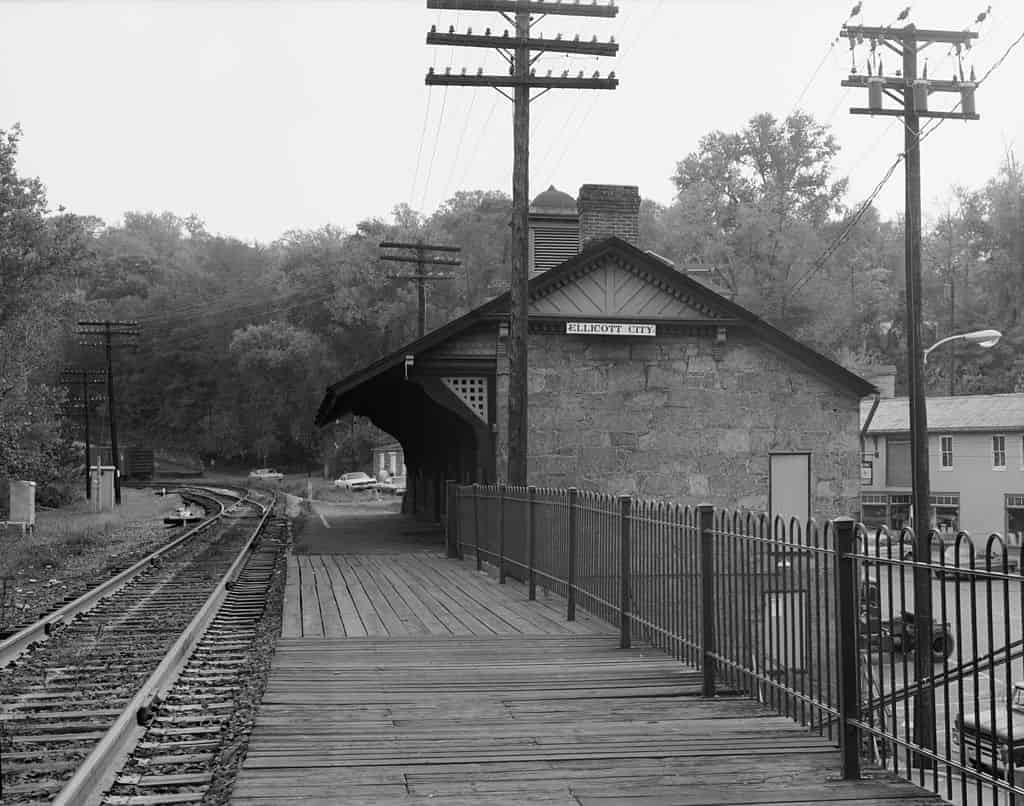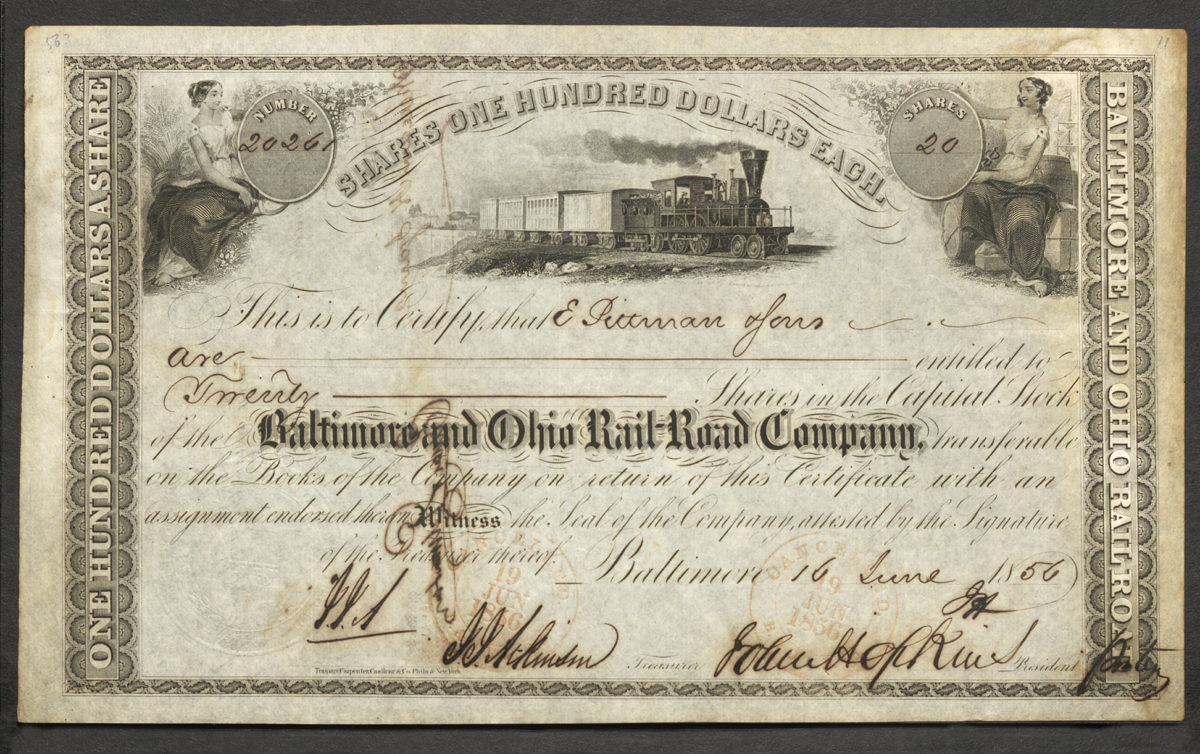![The Annapolis Junction on the B & O Railroad, 1861. Frank Leslie’s Illustrated Newspaper, courtesy of LOC [p.d.].](https://schulichcollection.org/content/uploads/2018/04/BO_narrative-image_2_Annapolis-Junction-on-the-B-O-Railroad-min.jpg)
Johns Hopkins and the B & O Railroad
When the B&O became the first railroad to open its doors to the general public, its hub in Baltimore catapulted the city to major growth and prominence. President of the company Johns Hopkins, whose signature appears on this certificate, was also known for his donation founding the Johns Hopkins Hospital and Johns Hopkins University.
Header Image: The Annapolis Junction on the B & O Railroad, 1861; author Frank Leslie’s Illustrated Newspaper courtesy of Library of Congress [1].
“As this country’s first common carrier railroad the B&O was instrumental in growing and stimulate our nation's economy during a time when “West” meant the Ohio River. While never a wealthy company its legacy will forever be remembered as a survivor and putting customer service above all else. ”

The B & O’s Ellicott City Station is the oldest passenger station in the U.S.; author William E. Barrett courtesy of Library of Congress via Wikimedia Commons
The Baltimore and Ohio Railroad Company—the B&O in short, as is found in the game Monopoly—was a commercial railroad company that transported both freight and passengers. It was founded in 1827, making it the first railroad in America to be opened for public service. It was also the first company to operate an American-built steam engine locomotive, the “Tom Thumb.”
The Erie Canal had been completed in 1825, connecting what was then considered to be the “American West” to New York City, cementing the city’s role as a central hub of trade and commerce in the region. The Baltimore and Ohio Railroad was built to help Baltimore economically compete with other cities in the region by connecting to western markets. The B&O greatly expanded Baltimore’s hinterlands; for a time, their slogan was “Linking 13 Great States With The Nation.” By the time of this certificate, shipments to and from Baltimore amounted to tens of millions of dollars, making it a regional center of finance and commerce.
Johns Hopkins was serving as president of the B&O in 1856, when this stock certificate was produced, and his signature appears in the bottom right corner. Hopkins came from a Quaker family that owned a tobacco farm but became involved in trade and worked his way up in the business world. He served as president and other managing roles of several local banks and became a director of the B&O in 1847. Hopkins became the third largest share-holder in the company, after only the State of Maryland and the City of Baltimore. He was able to use his profits to support the company through several financial crises and still accumulated enough savings to pursue philanthropic work. Hopkins founded the Johns Hopkins Hospital and Johns Hopkins University when he endowed $7 million—at the time the largest philanthropic endowment ever made in America—to be split between the two institutions. The connected hospital and medical school ultimately served as the model for academic institutions in the United States.
Curiously, this particular stock was signed on the 16th of June, then canceled three days later. The certificate was printed by Toppan, Carpenter, Casilear & Co., a company that printed U.S. postage 1851–1861, and later merged with other printers to form the prolific American Bank Note Company. This certificate is beautifully illustrated with three vignettes. At the top left hand corner, a maiden representing Ceres, the Roman goddess of agriculture, holds a sickle while surrounded by wheat and grape vines. At the right, another maiden representing the Greek goddess Athena sits on a pile of cargo at (presumably) the port of Baltimore, with the sails of a ship visible in the background. In her hand is a caduceus representing Hermes, messenger of the gods, in this context alluding to commerce and trade. The center piece shows an early steam-engine locomotive, which supported industry and trade by distributing products to market.
 University of Nevada, Reno
University of Nevada, Reno
